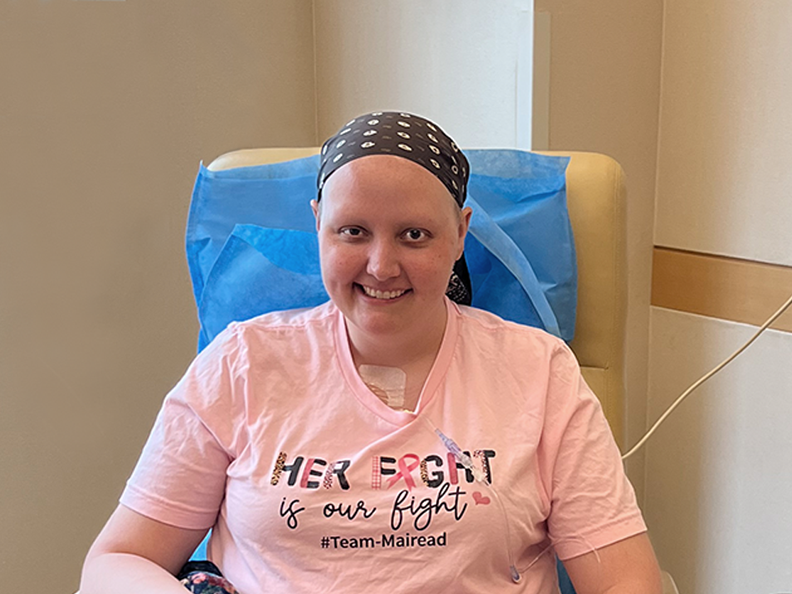Your gift is 100% tax deductible
Community Health Centers Meet Only 50% of Mammography Needs
ACS recommends targeted solutions for community health centers to reduce screening disparities based on race and health insurance coverage.
The Challenge
Mammography screening can reduce breast cancer mortality by allowing women to be diagnosed earlier, when the cancer can usually be successfully treated. Yet in the United States, screening disparities based on race and income levels leaves many women at risk for not getting diagnosed until the breast cancer is at a later stage, when treatment options are usually limited and the chance of survival is typically poor. Some of these disparities are a holdover effect of redlining (see blue box below).
Community Health Centers (CHCs) play an important role in providing cancer prevention and screening services by primarily serving people with low incomes who are vulnerable to barriers to accessing health care. In 2020, breast cancer screening was added as a quality-of-care metric to the Uniform Data System, which tracks performance of CHCs.
The Research
American Cancer Society (ACS) Associate Scientist, Jessica Star, MA, MPH, led the evaluation of this first year of available CHC breast screening data. She worked with several ACS colleagues: Priti Bandi, PhD, Adair Minihan, MPH, Ahmedin Jemal, DVM, PhD, and former ACS scientist Stacey Fedewa, MPH. They published their results in Preventive Medicine.
It is necessary for all health centers to address racial disparities in care and to atone for the decades of medical and public health mistreatment of Black persons, including the consequences of historical redlining. We have a responsibility as medical and public health professionals to reckon with systemic racism, and our own privileges, when developing health promotion and intervention activities.”
Jessica Star, MA, MPH
Surveillance & Health Equity Science
American Cancer Society

The team reviewed data from more than 1000 community health centers across the nation. They found that:
- Less than half of women (43.6%) who were eligible for breast cancer screening were up to date with screening guidelines. This is lower than the national average for mammography in women with incomes below the Federal Poverty Level.
- CHCs with medium or high proportions of Black people and people without health insurance had between 9% to 14% lower breast cancer screening rates than CHCs with low proportions of these populations
- CHCs in Medicaid expansion states and in Northeastern states had significantly higher screening rates than non-expansion states and the Midwest, South, and Western states.
Why It Matters
The authors conclude, “Targeted solutions centered around reducing cost, improving quality, and reducing structural disparities are needed to address low rates of breast cancer screening” in people with low incomes who use CHCs, who are likely to already experience healthcare inequities. They add, “It is important that we frame any future interventions while considering the history of medical and geographic discrimination against Black women.”
Redlining: The Basics
From the 1930s through the 1960s, residents in more than 200 cities across the United States were denied home loans based on their race or ethnicity. This deliberately discriminatory practice was called redlining, and it was based on the Home Owners’ Loan Corporation's (HOLC, a federal government agency) use of racist, color-coded maps to rank the loan worthiness of neighborhoods. The maps outlined areas where Black residents lived in red, deeming them risky.
Redlining prevented people of all races who lived in those neighborhoods from receiving home loans, but the largest impact was on Black families. The practice reinforced segregation, which already existed in the US. What’s more is that redlining cut specific neighborhoods within cities off from investments in health care, education, and other services.
Discriminatory home lending practices remain.
Redlining became illegal in 1968, but redlining practices in home lending remain. In the US, homeownership is the principal means of building wealth, and families of color have persistently lagged in home-ownership rates. In fact, the gap between Blacks and Whites in home ownership is larger today than it was in 1960. Plus, homes in formerly redlined districts are chronically undervalued.
Effects of redlining persist.
Studies show that people who live in formerly redlined areas are more likely to be exposed to environmental hazards, such as air pollution and extreme heat waves. They also have a higher risk of developing health issues, including cancer.
People in these areas also have a higher risk of limited access to health care, which often leads to delays in diagnosis and treatment—and that can result in worse outcomes.



